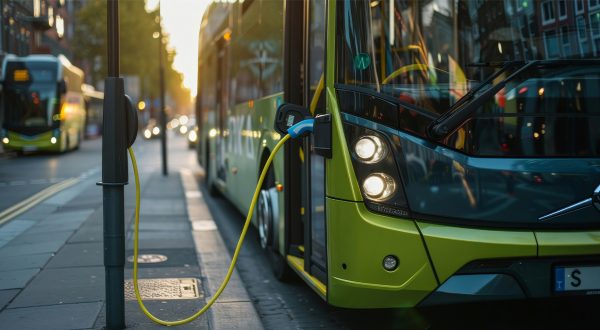Will the maintenance technician’s job be reduced to supervising robots in the future?
Reading time: 10 min
In recent years, drones and robots have fitted themselves into the wide range of technologies used to support maintenance teams. They detect leaks, repair roads, monitor electricity grids, and measure building energy performance – in short, they have taken over tasks that were previously performed by flesh-and-blood technicians. Will maintenance jobs be among the first to fall victim to automation? Can machines cope with the many unexpected situations that arise on the ground? Do humans – the technician and the company that employs them – really stand to gain from handing over to robots, AI, and other autonomous systems? The Agility Effect put these questions to Bilal Kaddouh, Research Fellow at the University of Leeds, who specialises in autonomous systems and is inventing the maintenance of the future as part of the British Self-Repairing Cities programme. He is an experienced drone pilot and remains confident that both man and machine have an essential role to play.
![]()
Which maintenance activities may be automated?
It is already possible to automate quite a few urban infrastructure maintenance activities and it will be possible to automate even more of them in the future. The question boils down to determining the benefit to be derived from automation and whether the value that automation generates offsets its potential risks. Public perception of automation is also an important issue.
Take, for example, urban tree trimming. Technically, it would be possible to use an autonomous robot fitted with cutting tools to do the job. But that won’t happen, because there is a major risk of accident and, even disregarding accidents, it is likely that such use of automation would not be well received. The spontaneous response of the public at large would be fear, even if safety were guaranteed.
Of course, other standard operations such as street cleaning and waste removal will rapidly be automated. The first level of automation will probably be in water and road system operation.
What types of machines and automated systems can be used in infrastructure maintenance?
It depends on whether we are talking about robots or PLCs, which are quite different. Of course, an electricity grid fitted with sensors and connected switches could be considered a giant robot. But if we are thinking more in terms of small, autonomous robots that can roll, crawl, climb, etc. these are mainly used to carry out inspections of infrastructure such as drinking water systems, sewers, underground facilities, etc. In most cases, these robots are attached to a cable.
Moving on to drones, there are semi-autonomous devices – they are generally not 100 % autonomous, due to stringent flight regulations, which require a pilot. Drones are also used in routine inspections and in thermal mapping to measure the energy efficiency of buildings.
In maintenance as such, a large number of industrial machines such as excavators, bulldozers, and trucks are of course equipped with augmented control systems. Operators use a large number of sensors to facilitate their work. For example, some of the machines used to dig trenches in streets can automatically detect and locate the position of underground utility lines.
What are the benefits of automation?
One of the main reasons to opt for automation is to reduce risks for technicians. Automation can also improve the quality and efficiency of maintenance operations by cutting maintenance time and cost while increasing precision.
But it should be pointed out that in many cases automation is introduced to improve processes. For example, 3D printing can now be used to repair incipient cracks in pavements. This can be done with machines that automatically detect incipient cracks and repair them with a filler product. As a result, road maintenance can now be done preventively, before potholes form, instead of after such defects are reported, as was previously the case. The introduction of technology brings a paradigm shift, even in maintenance.
Accessibility is another important point. Within the “Self-Repairing Cities” programme, we are developing robots that can access the central parts of water networks. The idea here is to send robots with the ability to recharge themselves autonomously into pipes, and to leave them there, permanently, to carry out inspection and repair. Unlike a robot working at the end of a cable, this system eliminates the need to open a trench, access the pipe and send the robot to perform an inspection and repair a leak if need be. The robot remains permanently in position.
Do human beings still need to “take over” when the situation calls for improvisation, since autonomous systems can’t improvise?
Yes. Machines can carry out maintenance inspections autonomously, but they report what they find and what they are doing to technicians, and human beings continue to take the decisions. If a robot detects a leak, for example, but is unable to find the source of it, it informs the technician, who then continues the investigation based on his own hypotheses, using his own methods.
Is there a risk that automation will cause know-how and knowledge to be lost when teams use autonomous systems?
I think there are two ways to looks at that issue. Knowledge and operational decision-making remain the responsibility of the maintenance teams. I don’t think we will ever reach a point where machines take care of the urban environment without anyone knowing what they are doing, where they are doing it, and why they are doing it. There will always be control centres and human beings will always retain an overview and the ability to take decisions based on reports issued by the machines.
As to whether it is easier to transfer know-how from one machine to another than to transfer it from one human being to another, and whether this will lead to a loss of the knowledge of experienced technicians – we mustn’t forget that human beings are good at documenting what they are doing and what they know. It has been a long time since essential secrets and know-how have depended on a single person!
And lastly, if you look at AI and machine learning systems that can propose technical solutions that technicians would not have thought of – this would only be accepted and implemented if the AI system’s line of reasoning is fully defined and understandable to a human being.
What changes will automation mean for teams of technicians in terms of recruitment and training? Will the maintenance technician have to transform themself into a data scientist, or alternatively will they simply sit back and push buttons?
The first thing that comes to mind, in answer to that question, is an agricultural tractor – one of the recent, highly automated models used on large American farms. They are fitted with a variety of sensors and can move and reap by themselves. But they are driven by farmers, not engineers! The point is that the farmers have taken a training course to understand the machines and learn how to use them. And I think the same applies in other sectors using specific automation technologies. One example would be robots used in surgery. Nobody would suggest an engineer be stationed in the operating theatre to operate the robot. The surgeon – who has learned how to use the robot – remains in charge.
Engineers are always careful to clearly define the intended user of a technology, in order to adapt it to the user’s needs and give it more or less autonomy. Take, for example, drones. Seven or eight years ago, drones were operated 100 % manually. Today, to all appearances, nothing, or virtually nothing, has changed. But a drone can pilot itself, and when you take control of it a large part of the operation can be automated to substantially simplify the work of the pilot. As a result, it now takes only two hours of training to learn how to operate a professional drone, and the number of users has substantially expanded.
As far as maintenance is concerned, this means that the tools may be changing, but they are still only tools. And even if they do the lion’s share of the work, I would not say they are transforming their users into “button pushers”. Remember that a lot of people work on a computer and push buttons all day long. Also, remember that the technicians working in the control rooms at nuclear power plants are also pushing buttons. What counts is knowing which button to push and when to push it and why. That is where the skills come in. By definition, in an automated system, if there are buttons, it is because they are needed. If they weren’t needed, their function would be an integral part of the PLC code.
Could the technician’s equipment be automated?
Yes, apart from robots and PLCs, there are cases in which technology can directly support maintenance technicians. For example, exoskeletons could be useful when technicians are working on an oil well. This type of equipment boosts their capabilities and can be helpful in cases where a robot cannot perform a task or access the equipment to be worked on.
In the military sphere, the augmented reality head-up vision in the helmet of an F35 fighter pilot is a good example of the “cyborg”, as opposed to “robot”, approach and constitutes a symbiosis between man and machine. In a more prosaic example, some cars are now equipped with screens that enable the driver to see “through” the car via outside cameras. This is also the idea behind the cameras used in some worksite cranes to reduce the risk of collision.
10/10/2019


